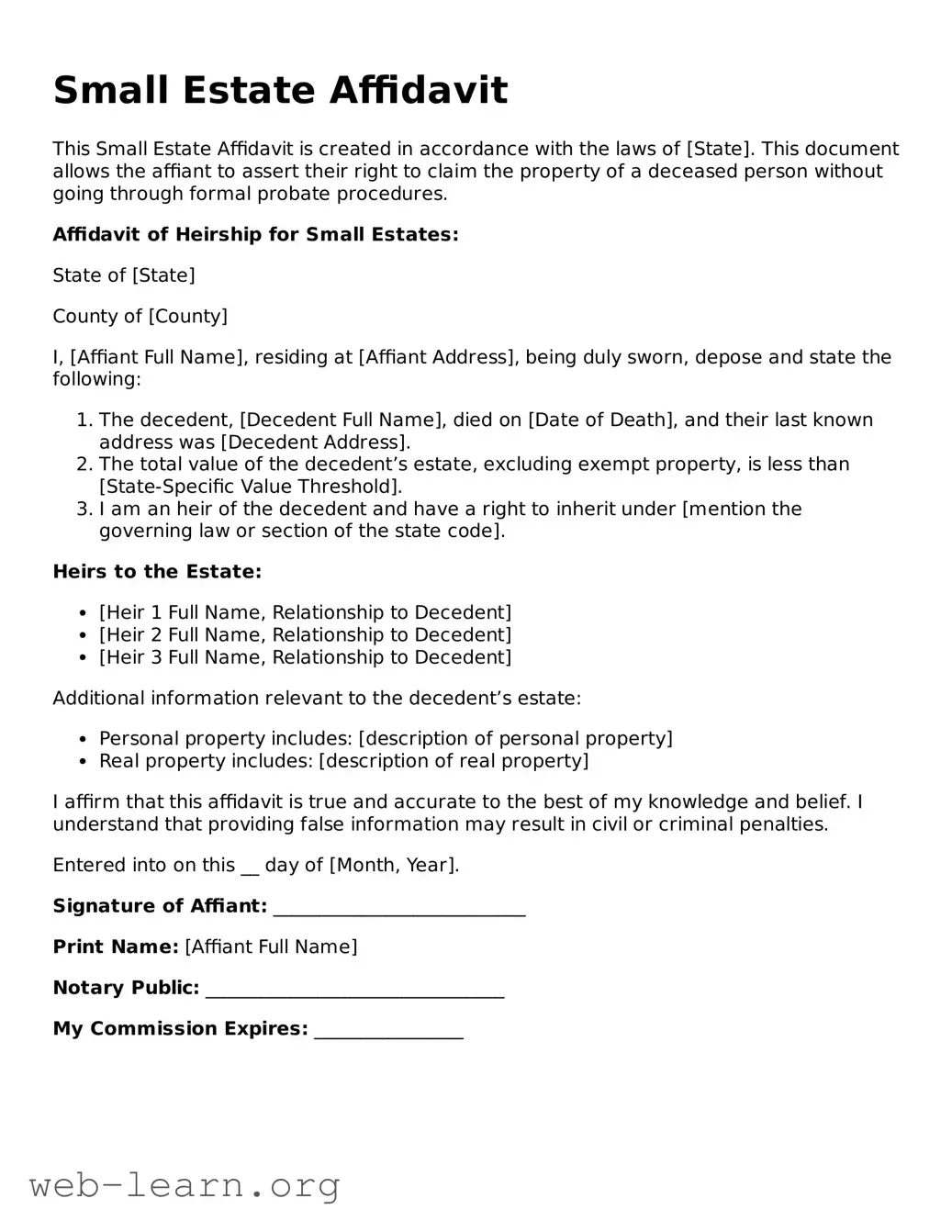Filling out a Small Estate Affidavit can be a straightforward process, but mistakes often occur that may complicate or delay the settlement of an estate. One common error is failing to provide accurate, complete information about the deceased. Omissions regarding the date of death or any identifying details can lead to unnecessary disputes or even rejection of the affidavit.
Another frequent mistake is neglecting to list all assets accurately. It’s crucial to identify every asset belonging to the deceased, including bank accounts, real estate, and personal property. Underreporting values or leaving out assets could lead to legal complications down the road.
People often misinterpret the state's threshold for a small estate. Each state has specific regulations defining what qualifies as a small estate. Without confirming the applicable limit, individuals may assume they are eligible when they are not, which could result in the necessity of a more complex probate process.
When individuals choose to sign the affidavit, they sometimes overlook the need for notarization. Many states require this document to be notarized to ensure authenticity. Skipping this step risks invalidating the affidavit and complicating the distribution process.
Additionally, individuals frequently do not consult with heirs before filing. Open communication is essential. Failing to inform heirs can lead to misunderstandings or disputes, particularly if assets are distributed unevenly or without consensus.
Some people mistakenly believe that the Small Estate Affidavit can serve as a substitute for a last will and testament. The affidavit is not a substitute document; rather, it is a means to collect specific assets without going through full probate. Mesh this distinction to avoid further complications.
Another common oversight occurs when individuals forget to check for any outstanding debts or obligations the deceased may have had. Ignoring debts can result in legal liability for heirs if creditors come forward after assets have already been distributed. A thorough inventory and assessment of the estate’s liabilities is vital.
People sometimes fail to check the requirements of the institution, such as banks or financial entities, holding the deceased’s assets. Each entity may have specific forms or additional documentation needed to release funds or transfer ownership. Understanding these requirements ahead of time is essential.
Lastly, not keeping copies of the submitted affidavit can create issues later on. Retaining these documents ensures that all parties have access to the filed paperwork, which can mitigate misunderstandings and serve as proof of the actions taken concerning the estate.
